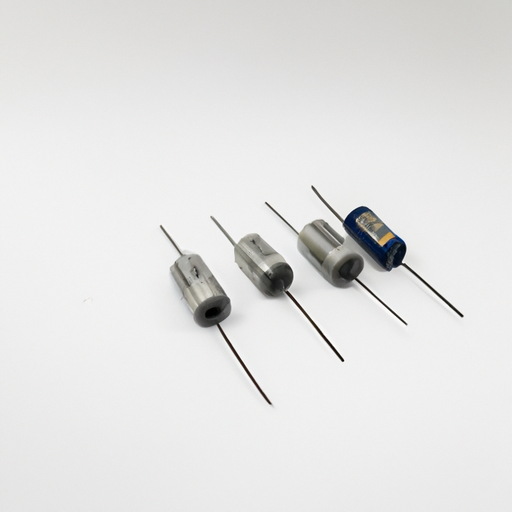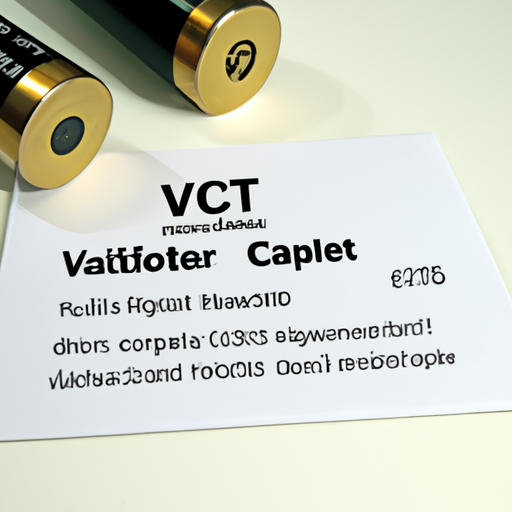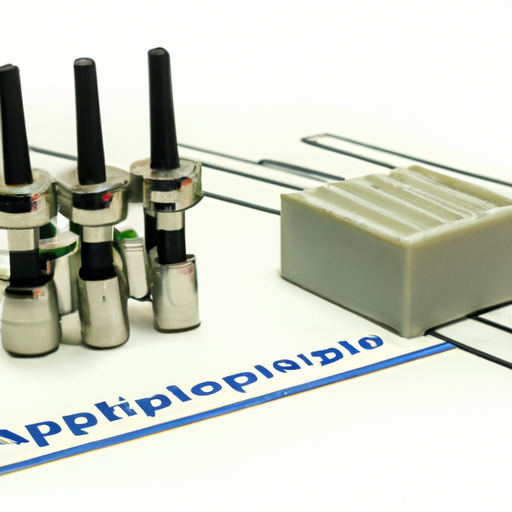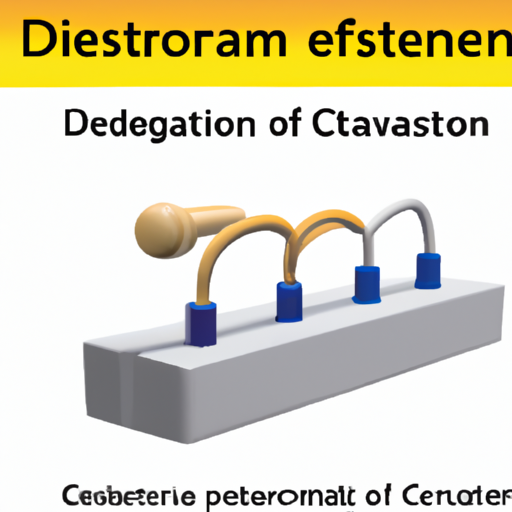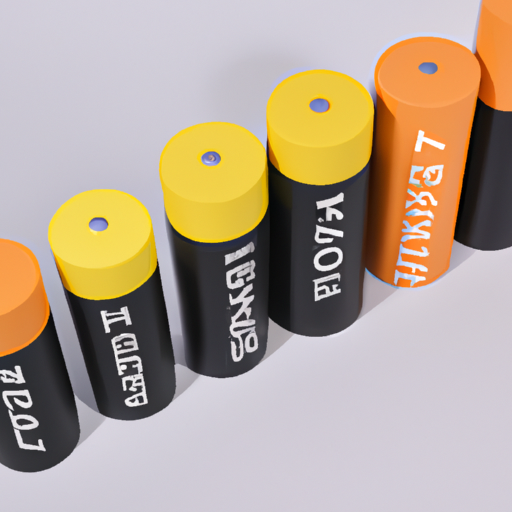The Latest Automotive Capacitor Specifications
I. Introduction
In the rapidly evolving automotive industry, capacitors play a crucial role in ensuring the reliability and efficiency of various electrical systems. Automotive capacitors are essential components that store and release electrical energy, helping to stabilize voltage and power delivery in vehicles. As vehicles become increasingly sophisticated, the specifications and technologies surrounding automotive capacitors are also advancing. This article aims to provide an overview of the latest automotive capacitor specifications, types, applications, and future trends, offering insights into their importance in modern vehicles.
II. Types of Automotive Capacitors
A. Electrolytic Capacitors
Electrolytic capacitors are widely used in automotive applications due to their high capacitance values and compact size. They are polarized components, meaning they have a positive and negative terminal, which makes them suitable for DC applications. Commonly found in power supply circuits, these capacitors are known for their ability to handle large amounts of energy.
**Advantages:** High capacitance, cost-effective, and suitable for bulk energy storage.
**Disadvantages:** Limited lifespan, sensitivity to temperature and voltage, and potential for leakage.
B. Ceramic Capacitors
Ceramic capacitors are non-polarized components that are often used in high-frequency applications. They are known for their stability and reliability, making them ideal for filtering and decoupling applications in automotive electronics.
**Advantages:** High stability, low ESR, and wide temperature range.
**Disadvantages:** Limited capacitance values compared to electrolytic capacitors and potential for microphonic effects.
C. Film Capacitors
Film capacitors are made from thin plastic films and are known for their excellent performance in high-frequency applications. They are often used in applications requiring high voltage and low losses, such as in power electronics and motor drives.
**Advantages:** High voltage ratings, low ESR, and long lifespan.
**Disadvantages:** Larger size compared to electrolytic and ceramic capacitors and higher cost.
D. Supercapacitors
Supercapacitors, also known as ultracapacitors, are energy storage devices that bridge the gap between traditional capacitors and batteries. They can store a significant amount of energy and are increasingly used in electric and hybrid vehicles for energy recovery and management.
**Advantages:** High energy density, rapid charge and discharge capabilities, and long cycle life.
**Disadvantages:** Lower voltage ratings and higher cost compared to traditional capacitors.
III. Key Specifications of Automotive Capacitors
A. Capacitance Value
Capacitance is a measure of a capacitor's ability to store electrical energy, typically expressed in microfarads (µF) or farads (F). In automotive applications, the capacitance value is critical for ensuring that circuits operate efficiently and reliably. Capacitors with higher capacitance values can store more energy, which is essential for applications like power supply stabilization.
B. Voltage Rating
The voltage rating of a capacitor indicates the maximum voltage it can handle without failing. In automotive applications, common voltage ratings range from 16V to 100V, depending on the specific application. Selecting a capacitor with an appropriate voltage rating is crucial to prevent breakdown and ensure long-term reliability.
C. Temperature Range
Automotive capacitors must operate effectively across a wide temperature range, typically from -40°C to +125°C. Temperature stability is vital for maintaining performance in various environmental conditions, such as extreme heat or cold.
D. ESR (Equivalent Series Resistance)
ESR is a measure of the resistance encountered by the current flowing through a capacitor. It impacts the capacitor's performance, particularly in high-frequency applications. Lower ESR values are desirable as they lead to reduced power losses and improved efficiency. Typical ESR values vary by capacitor type, with ceramic capacitors generally exhibiting the lowest ESR.
E. Ripple Current Rating
Ripple current rating indicates the maximum AC current a capacitor can handle without overheating. In automotive systems, capacitors often experience fluctuating currents, making this specification critical for ensuring reliability and performance. Capacitors with higher ripple current ratings can better withstand the demands of automotive applications.
IV. Recent Advances in Automotive Capacitor Technology
A. Miniaturization and Weight Reduction
As automotive manufacturers strive for greater efficiency, there is a growing trend toward miniaturization and weight reduction in capacitor design. Smaller capacitors take up less space and contribute to overall vehicle weight reduction, which can enhance fuel efficiency and performance.
B. Enhanced Durability and Reliability
Recent advancements in materials and manufacturing processes have led to capacitors that are more durable and reliable. Innovations such as improved dielectric materials and advanced sealing techniques help to extend the lifespan of capacitors, making them better suited for the demanding automotive environment.
C. Integration with Electric and Hybrid Vehicles
The rise of electric and hybrid vehicles has driven innovations in capacitor technology, particularly in the realm of supercapacitors. These devices are increasingly used for energy storage and management, playing a vital role in regenerative braking systems and energy recovery applications.
V. Applications of Automotive Capacitors
A. Power Supply Systems
In automotive power supply systems, capacitors stabilize voltage and ensure consistent power delivery to various components. They help to filter out noise and provide a smooth power supply, which is essential for the reliable operation of electronic systems.
B. Infotainment and Communication Systems
Capacitors play a crucial role in maintaining signal integrity in infotainment and communication systems. They help to filter out noise and ensure that signals are transmitted clearly, enhancing the overall performance of these systems.
C. Electric and Hybrid Vehicle Systems
In electric and hybrid vehicles, capacitors are integral to regenerative braking systems, where they store energy generated during braking for later use. This capability improves overall energy efficiency and extends the vehicle's range.
D. Safety and Control Systems
Capacitors are also vital in safety and control systems, such as airbag deployment systems and anti-lock braking systems (ABS). They provide the necessary energy to activate these systems quickly and reliably, ensuring passenger safety.
VI. Industry Standards and Regulations
A. Overview of Relevant Standards
Automotive capacitors must comply with various industry standards, such as AEC-Q200, which outlines the qualification requirements for passive components used in automotive applications. Compliance with these standards ensures that capacitors can withstand the harsh conditions of automotive environments.
B. Importance of Compliance
Adhering to industry standards is crucial for manufacturers, as it ensures the reliability and safety of automotive capacitors. Non-compliance can lead to failures, recalls, and safety hazards, making it essential for manufacturers to prioritize compliance in their design and manufacturing processes.
C. Impact of Regulations on Design and Manufacturing
Regulations influence capacitor design and manufacturing by setting requirements for performance, reliability, and safety. Manufacturers must continuously innovate to meet these standards while also addressing the growing demand for more efficient and compact components.
VII. Future Trends in Automotive Capacitor Development
A. Growing Demand for Electric Vehicles
The increasing demand for electric vehicles is driving innovation in capacitor technology. As manufacturers seek to improve energy storage and management systems, capacitors will play a pivotal role in the development of more efficient electric and hybrid vehicles.
B. Innovations in Materials and Technology
Future advancements in materials and technology will likely lead to the development of capacitors with higher energy densities, improved performance, and greater reliability. Research into new dielectric materials and manufacturing techniques will continue to shape the future of automotive capacitors.
C. Potential Challenges and Opportunities
While the automotive capacitor market presents numerous opportunities, challenges such as rising material costs and the need for compliance with stringent regulations may impact development. However, manufacturers that can navigate these challenges will be well-positioned to capitalize on the growing demand for advanced automotive technologies.
VIII. Conclusion
Automotive capacitors are essential components that contribute to the reliability and efficiency of modern vehicles. Understanding the latest specifications, types, and applications of these capacitors is crucial for manufacturers and engineers alike. As the automotive industry continues to evolve, the importance of capacitors will only grow, driven by advancements in technology and the increasing demand for electric and hybrid vehicles. By staying informed about the latest trends and innovations, stakeholders can ensure that they are well-equipped to meet the challenges and opportunities that lie ahead in the automotive capacitor market.
IX. References
1. AEC-Q200: Qualification of Passive Components for Automotive Applications.
2. "Automotive Capacitors: A Comprehensive Guide," Journal of Automotive Engineering.
3. "The Role of Capacitors in Electric Vehicles," IEEE Transactions on Power Electronics.
4. Industry reports on capacitor technology and automotive applications.
5. Additional resources for further reading on automotive capacitors and their specifications.

